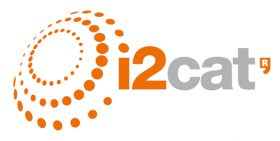
I2CAT Foundation
I2CAT is a non-profit technology and innovation centre located in Barcelona (Spain) which promotes R+D+i activities in Internet Technologies within the ICT industry. The centre stands up for a new model in a new conception of innovation: the collaboration between companies, public administration, the academic environment and end-users. Thus, it eases an open innovation framework, characteristic of the Internet culture. The vision of i2CAT is to achieve Internet excellence in research and innovation activities applied to the market needs, and become an international strategic partner driving the deployment of the Internet across the economic, industrial and social sectors. Its board is based on an open innovation collaboration model ranging in all sectors mentioned before. Some board members are: Mediapro, Cisco, Orange, Alcatel, Fujitsu, Juniper, Interoute and Vodafone, plus four Catalan government departments and the three main technical universities of Catalonia, led by Universitat Politècnica de Catalunya (UPC). i2CAT’s activities are concentrated around, but not limited to, novel network services and technologies (fixed and mobile), open access networks, sensor networks, e-health, networked media systems and industrial Internet, with special focus on NFV and SDW/N technologies, new clean slate architectures, Future Internet experimentation, sensor networks, IoT, M2M and content networks and broadcast technologies with EC footprint in 48 projects (1 FP6, 30 FP7, 6 H2020, 6 CIP and 5 in other EU areas), being 7 of them coordinated projects.
The strategic goals of i2CAT are:
- Generating Research and Innovation activities according to the market needs by developing new value-added products and encouraging the creation of new technology-based start-ups which generate social and economic impact.
- Easing collaboration between companies, public administration, universities and users in order to deploy new advanced experimental infrastructures.
- Enhancing companies’ competitiveness through innovation and technology transfer.
- Standing up for local development through international networking.
Our main values are:
- Integrating research, development and innovation, in order to create close innovation cycles.
- Fostering co-creation in a quadruple helix model (university, company, public administration and users).
- Carrying out activities both in international and regional environments.
- Designing and building novel infrastructures.
The Media Unit of i2CAT focuses its work on different research, development and innovation areas related to the transmission and visualisation of multimedia contents applied to the media, culture and tourism industry sectors. By means of participation in diverse national and international projects and through a strong collaboration with the main Catalan audiovisual companies, an effective improvement has been made upon the state-of-the-art in the following areas: content distribution systems, videoconferencing and ultrahigh definition systems. On the other hand, our short and mid-term strategy is focused mainly on the following R+D+I lines: content management, context aware content adaptation & delivery, content transmission in heterogeneous networks, ultra-high definition, immersive environments and augmented reality applications.
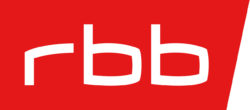
Rundfunk Berlin-Brandenburg
RBB is the public broadcaster for the Berlin area with one television channel, six radio stations and interactive multimedia services (websites, mobile apps, teletext, Smart TV applications and social media feeds). We service six million citizens, have longstanding experience in EC projects and extensive knowledge of innovative formats and services, content production/distribution, user testing, accessibility services, collaborative content production, personalized media, HbbTV and interactive content.
As part of the Technical Innovation Management department, public broadcaster RBB’s Innovation Projects team has been working on European research and development projects for almost two decades. We develop interactive apps delivering additional content for TV and radio broadcasts. We develop professional tools allowing editors to quickly and easily create tailored apps. We look at the habits and preferences of users in order to improve our content on all distribution channels. We look for solutions allowing listeners to personalise their favourite radio programmes. We continue to support the barrier-free access strategies of RBB and the ARD by optimising accessibility services. We explore the possibilities offered by 360° video, including barrier-free access. With our focus on these themes, we continue to support the development of new, future-oriented media services.
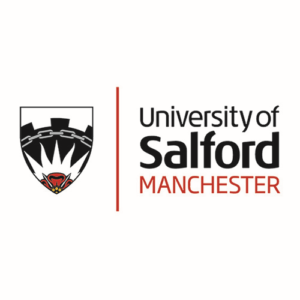
The University of Salford
University of Salford (USAL) is widely regarded as one of the UK’s leading enterprise universities, due to its links with industry, commerce and the community. USAL currently has 20,000 students, including over 3,500 students from more than 130 countries around the world. Its researchers thrive on encouraging innovation, embedding entrepreneurship into the whole curriculum and delivering genuine knowledge transfer by close collaboration with external stakeholders. The new University Research Strategy 2014-2020 emphasizes the role of research at the core of the University, establishing new Research Centres of Excellence to underpin world-leading research outputs and real-world impact.
USAL achieved an impressive set of results in the Research Excellence Framework (REF) exercise in 2014. Within computer Science and Informatics: 89% of work was ‘internationally recognised’; 44% of work was rated as ‘world-leading’ or ‘internationally excellent’. The School of Computing, Science and Engineering hosts the academic members of the research team. The school attracts about £2.5M research income per annum, and has currently around 110 PhD students.
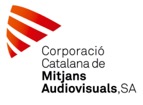
Corporació Catalana de Mitjans Audiovisuals
The Corporació Catalana de Mitjans Audiovisuals (CCMA, www.ccma.cat) is the leading communications group in Catalonia. It operates under the aegis of the Catalan Government and is financed through public funding and advertising revenue. The Corporació has been a member of FORTA (the Federation of Autonomous Area Radio and Television Organisations) since its founding, in April 1989. It also forms part of the European Broadcasting Union through Catalunya Música, which takes part in this organisation’s musical exchange Euroradio, which brings together all the public bodies and the main private European radio and television companies.
CCMA manages the audiovisual media of the Generalitat de Catalunya: the channels of TV3- Televisió de Catalunya and the stations of the Grup d’Emissores de Catalunya Ràdio, and the digital contents these media sources create. It does this as a public service and with a firm commitment to quality, independence and the promotion of Catalan language and culture. It also forms part of the Fundació La Marató de TV3, which promotes social awareness and biomedical research.
TV3 – Televisió de Catalunya, the CCMA broadcasting TV, was founded in 1983 with the mission of restoring the Catalan language and culture to their rightful place. For the last five years, TV3 has been the most widely-viewed channel by Catalan audiences. It leads the audiovisual market within its territory, outranking other generalist TV channels which broadcast throughout all of Spain. These results reflect TV3’s attention to the tastes, interests and expectations of its audience.
TV3 is the leading name in Catalonia’s audiovisual industry and also an important driving force in production in Spain as a whole. It finances approximately forty projects a year that include documentaries, fiction and animation. These are television and film productions which are, for the most part, broadcast by the main channels and/or shown in leading cinemas in the country and have international outreach as well. TV3’s inventive and creative approach has placed it at the forefront in the audiovisual sector.
CCMA constantly stays on top of changes and developments in the communications sector. An important part of the channel’s strategy is to be present on whatever new platform appears, thus encouraging further distribution of its programming and an ongoing and direct relationship with its viewers. As a result, TV3’s profile and that of its programs on the social networks grow significantly every year. The mobile phone apps and applications for connected TVs are widely popular in Catalonia. To reach the greatest number of viewers, CCMA also offers the TV3alacarta service via different platforms: the Web, mobile phone and tablet applications, consoles, applications for connected TV and televisions with HBBTV.

Motion Spell
Motion Spell (http://motionspell.com) is an SME specialized in audio-visual media technologies. Motion Spell was created in 2013 in Paris, France.
Motion Spell was initially created to support the industry activities of an open-source project called GPAC under the name “GPAC Licensing” (http://www.gpac-licensing.com).
GPAC is a multimedia open-source project created in a startup in 1999 in New-York City around a new set of standards called MPEG-4. MPEG-4 was intended to be an open replacement to Flash. Therefore the GPAC tools go beyond audio and video (interactivity, subtitles, etc.) ; the tools include authoring tools, packagers, streamers, and a player. GPAC is used by big players such as Youtube, Sony, Samsung, x264, etc. Nowadays the GPAC team is dispatched in different entities, mainly Motion Spell and the Telecom ParisTech university.
The motivation of Motion Spell is to push technical innovation from ideas to standards to prototypes. Motion Spell is committed to open standards and open software as a way to disseminate innovation. Then we accompany our customers to integrate our bricks into their products. This means that:
Motion Spell activities have extended beyond GPAC.
Motion Spell builds standards and software. That involves a lot of R&D.
Motion Spell helped some companies being bootstrapped out of our technical activities. These companies focus on market issues and end-to-end workflows while Motion Spell stays on the R&D side.

Universitat Autònoma de Barcelona
The Universitat Autònoma de Barcelona (UAB) plays a leading role in scientific research in Spain and it was selected in the top 5 universities to reach the label of Campus of International Excellence from the Spanish government. UAB is participating in 233 international founded projects.141 in the 7PM: 67 in Cooperation (9 IPs, 30 Streps, 1 NoE, 7 CSA, 6 Eranet), 22 in Capacities, 7 in Ideas, 38 in People, and more from other pan-European programs (CIP, Interreg, Tenders, Eureka, Europe aid, etc.). UAB is acting as project coordinator in 16 from H2020 what shows its experience and support capabilities. Given the multidisciplinary nature of the project and the role played by UAB it will participate in the project via five departments: Translation, Psychology, Journalism, and Sociology and Economics. TransMedia Catalonia will be the research group working in this project http://grupsderecerca.uab.cat/transmedia/.
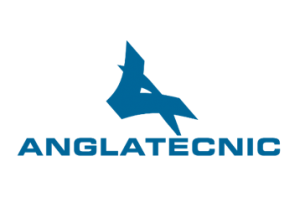
Anglatècnic
Anglatècnic (www.anglatecnic.com) is a SME founded in Barcelona in 1999 specialising in the engineering and development of software systems for the broadcast and IT sectors.
Anglatècnic comprises a team of telecommunications engineers and computer engineers. Our passion for these sectors means we are quick to adapt to the rapidly changing world of computing and technology. This adaptability together with our track record of working with world leaders in the television industries, multinationals, and traditional companies seeking to incorporate new technology means we are uniquely placed to provide solutions and advise our clients in order to meet their needs.
Our efficiency lies in our rigour in defining the work and development needed to carry projects out. We also take account of our client special requests and ensure that we thoroughly grasp their needs.
Our development work basically comprises tailor-made projects, the interface for which is aimed at operators and/or users. We keep in constant contact with the future system users/operators throughout the work to ensure the finished product meets their needs. In the case of automated systems, there may be no end users, in this case, we painstakingly detail all the possible events that may arise to facilitate fault-finding and fault solutions
We have a range of innovative products that can be immediately installed in TV broadcasts, as well as New Technology products for different kinds of companies such as industries, hospitals, schools, etc. The advantage of our products is that they are easily adapted to meet the client’s needs given that they have been entirely developed by Anglatècnic.
For the broadcast industry, one of our main lines is “Accessibility and Data in TV” where Anglatècnic has been implementing and integrating its own solutions for content insertion and broadcast in many TV stations and broadcasting companies.
Another important broadcast line is “Video” with our own solution for the exchange and storage of broadcast video files and also solutions for remotely monitoring TV signals.
Anglatècnic has also been developing applications for HbbTV and participated in HbbTV pilots.
Our main clients in this sector are accessibility service providers, many regional and national tv stations, cable operators and some universities.
For the IT industry, Anglatècnic provides efficient tailor-made solutions, from publication and management of content-based dynamic web portals to high reliability systems such as entertainment for hospitals. Anglatècnic is also involved in projects covering the management and publication of Video onDemand and Live Video for the Internet.

Institut für Rundfunktechnik GmbH
IRT (www.irt.de) is an SME specialised in audio-visual media technologies. Created as a non-profit organisation, IRT is dedicated to technical research and development for the benefit of the public. Founded in 1956, it is jointly owned by the Public Service Broadcasters of Germany, Austria and Switzerland (ARD, ZDF, DRadio, ORF and SRG/SSR). About 100 experienced engineers and researcher find innovative and real-world solutions which enhance the quality of radio, television and new media services.
As a main motivation, IRT sees its role as that of a technical advisor to broadcasters as well as a consulting body for industry. The institute collaborates with numerous commercial companies, various research organisations and universities in the broadcasting, media, communications engineering and IT sectors.
IRT is committed to preserving public broadcasting in Europe and beyond. This commitment also extends to new markets, upcoming technologies and emerging requirements. The institution’s extensive experience enables it to provide its associates and clients with reliable and knowledgeable service, by performing fundamental research, by developing new broadcasting/media technologies and by implementing feasible solutions for regular operation. To achieve its vision, IRT strongly favours open technical standards and horizontal system markets. Consequently, IRT an active contributor to the relevant standardisation bodies and initiatives, from WorldDMB to HbbTV which was co-found by IRT, and from ETSI to ITU. The institute is firmly involved in the technical work of the EBU (European Broadcasting Union) and is founding member of the European Technology Platform NEM (New European Media).
IRT gained substantial experience with national and international collaborative projects, notably in the European RACE, ACTS, IST, ICT and H2020 programmes as well as in national research initiatives.

RNIB
The Royal National Institute of Blind People (RNIB) is a UK charity offering information, support and advice to almost two million people living with sight loss in the UK. RNIB has its headquarters in London with branches throughout the United Kingdom including Northern Ireland. The charity’s patron is Queen Elizabeth II. RNIB is governed by Royal Charter. The objects for which RNIB is established are “to promote the better education, training, employment and welfare of blind and partially sighted people, and generally to watch over and protect the interests of blind and partially sighted people and to prevent blindness.” The charity is governed by the Board of Trustees, the supreme decision-making body of RNIB. The Board is made up of 12 Trustees out of which 75 per cent must be blind or partially sighted.
RNIB has recently restructured and we now carry out the majority of its services (as opposed to fundraising for example) through its wholly owned subsidiaries RNIB Charity and Action for Blind People to maximise its cost effectiveness and efficiency. A number of committees support their work and in addition to the board, RNIB’s work is supported by more than 3000 volunteers throughout the UK.
RNIB works to eliminate avoidable sight loss. To this end, we lead on the UK Vision Strategy, developed by a large eye health and sight loss alliance, to set the direction for the eye health of the nation. RNIB provides support, information and advice for people affected by sight loss, as well as for eye health and other professionals. In 2007/08 over 280,000 people a month contacted RNIB for general information on sight loss, to lend their voice to a campaign, for expert advice, or to buy an accessible product. RNIB also works to increase access to information for blind and partially sighted people. This ranges from campaigning for more audio description on television, cinemas and at sports venues to getting books, bills and other written material available in accessible formats (such as braille, large print or audio). RNIB also runs a radio station, Insight Radio – Europe’s first radio station dedicated to the blind and partially sighted community. Insight Radio broadcasts online – Freeview Channel 730 and on 101 FM in the Glasgow area.
All stakeholders responsible for bring audio description into the market gratefully acknowledge the involvement of blind and partially sighted people and of RNIB. It was crucial in the lobbying for AD solutions in the UK. A consistent effort went on for several years before results were achieved, and therefore RNIB set up a specific department to deal with AD lobbying, technical issues and marketing of the service. RNIB’s work to create a better world for people with sight problems has led to important progress on audio description over the years. As the leading organisation representing the people with sight loss in the UK, the charity has taken an active interest in the broadcast media because of the importance radio and TV play in the lives of blind and partially sighted people.
From 1991 to 1995, RNIB participated in research (funded by the European Union and with the collaboration of the BBC, ITC and ITV) on AUDETEL, an experimental analogue audio description service, which, in 1994, implemented a successful test service (for 100 blind and partially sighted people) proving the technical feasibility of TV audio description and demonstrating its value to blind and partially sighted people.
As policy and practice shifted towards digitising the UK’s terrestrial television networks, RNIB lobbied government, hardware manufacturers and broadcasters to implement digital audio description services. The charity launched a campaign to ensure realisation of the potential of digital television to provide audio description. It established a campaign planning group in 2000 and by autumn 2001 active campaigning was under way as Government and Parliament progressed what became the Communications Act 2003 that mandates the delivery of audio description on all digital channels that reach at least 0.5 percent of the population. By the end of 2001, in a parallel initiative, audio description had been established in eleven UK cinemas in time for release of Harry Potter and the Philosopher’s Stone (the first Harry Potter movie). In April 2002, RNIB published Get the picture report that identified audio description as the priority broadcasting policy objective for blind and partially sighted people.
Since then, RNIB has worked tirelessly to get the recognition that the art and technique of audio description deserves. We have worked with technology such as Sky, Panasonic, Samsung, Sony and many others to improve the accessibility of receiver devices. The charity has worked with stakeholders across the board – end users of audio description, broadcasters, audio description producers, film studios, regulatory authorities, and trade bodies and, this consistent effort has been instrumental in making audio description widely available across services in the country.
